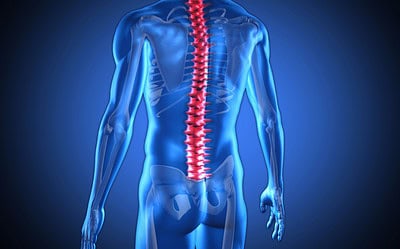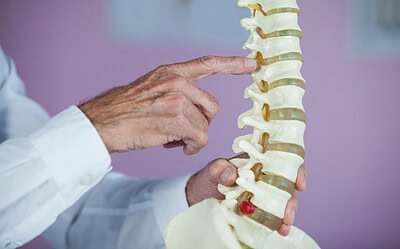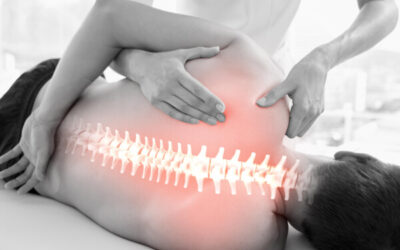Chronic back pain can be debilitating, impacting every aspect of one’s life. Fortunately, advancements in medical technology have given rise to innovative solutions, among which back stimulator implants stand out. In this in-depth exploration, we will delve into the world of back stimulator implants, shedding light on their functionality, benefits, implantation procedure, post-implantation care, and answering common questions.
Understanding Back Stimulator Implants
Back stimulator implants, also known as spinal cord stimulators (SCS), are cutting-edge devices designed to address chronic back pain. The core principle involves the use of electrical impulses to modulate or interrupt pain signals as they travel to the brain. By placing electrodes along the spinal cord, these implants provide relief to individuals for whom traditional treatments have proven ineffective.

Overview of Spinal Cord Stimulation:
Delving into the science:
Spinal cord stimulation operates on the principle of altering pain perception by modifying the way pain signals travel to the brain. The spinal cord acts as a pathway for these signals, and the implant intervenes in this process. Electrical impulses generated by the device create controlled interference, preventing pain signals from reaching the brain at full intensity. This interference effectively replaces the sensation of pain with a more manageable, tingling, or pleasant sensation.
Examples of Alleviated Conditions:
Spinal cord stimulation has been proven to be beneficial for various chronic back pain conditions. Notable examples include failed back surgery syndrome (FBSS), where individuals continue to experience pain after spinal surgery. Neuropathic pain, often associated with nerve damage or malfunction, is another condition that may be alleviated. Additionally, complex regional pain syndrome (CRPS) and certain cases of radiculopathy, or sciatica, can find relief through this innovative technology.
How Back Stimulator Implants Work:
Detailed Mechanisms of Action:
The intricate workings of back stimulator implants involve the strategic placement of electrodes along the spinal cord. These electrodes emit electrical pulses that create a “tingling” or “numbing” sensation, effectively disrupting the transmission of pain signals. The implant does not eliminate the source of pain but rather modifies the way the brain perceives it. This targeted intervention provides a unique form of pain management for individuals experiencing chronic discomfort.
Customizable Settings for Personalized Relief:
One of the key features of back stimulator implants is their adaptability to individual needs. These devices come with customizable settings that allow healthcare providers and patients to fine-tune the level and pattern of electrical stimulation. This customization is crucial because pain manifests differently for each person. By tailoring the implant’s settings, individuals can achieve a personalized level of relief, optimizing their experience with the device.
Benefits of Back Stimulator Implants
Regaining Mobility and Daily Activities:
Chronic back pain often restricts mobility and impedes the ability to perform routine activities. Back stimulator implants offer a significant breakthrough in pain management, enabling individuals to regain mobility and engage in daily tasks with greater ease. Whether it’s walking, standing, or participating in recreational activities, the reduction in pain facilitates a return to a more active and fulfilling lifestyle.
Reduced Dependence on Pain Medications:
One of the notable advantages of back stimulator implants is the potential reduction in the need for traditional pain medications. Individuals suffering from chronic pain are often reliant on medications that may have side effects and long-term consequences. With effective pain management through spinal cord stimulation, there’s a promising prospect of minimizing or eliminating the use of these medications, contributing to overall health and well-being.
These benefits not only address the physical aspects of chronic back pain but also extend to the emotional well-being of individuals. By providing relief and enhancing functionality, back stimulator implants play a pivotal role in improving the overall quality of life for those grappling with persistent back pain.
Contribution to Improved Mental Health:
Back stimulator implants play a pivotal role in addressing the psychological impact of chronic pain. By effectively managing and mitigating pain, these implants contribute to improved mental health outcomes. Reduced pain levels can alleviate stress and anxiety, allowing individuals to regain a sense of control over their lives. The restoration of mobility and the ability to engage in once-limited activities can bring about a positive shift in one’s mental outlook.
The Implantation Procedure
While the prospect of relief is enticing, it’s essential to understand the surgical process involved in receiving a back stimulator implant. Knowledge about the procedure helps individuals make informed decisions and manage expectations.
Pre-Implantation Evaluation:
The decision to undergo a back stimulator implantation is a carefully considered process involving multiple steps. It typically starts with an initial consultation with a pain management specialist or neurosurgeon. During this consultation, the medical history, current symptoms, and previous treatments are thoroughly reviewed. Diagnostic procedures, such as imaging studies and nerve conduction tests, may be conducted to assess the specific source and nature of the pain.
Following the initial consultation, there may be additional visits to discuss the potential benefits and risks of the procedure. The patient’s overall health, including any existing medical conditions or medications, is taken into account. Psychological evaluations may also be conducted to ensure that the patient is mentally prepared for the challenges and expectations associated with the implant.
Thorough Communication for Suitability:
Effective communication between the patient and the medical team is paramount throughout the pre-implantation phase. Patients are encouraged to openly share their expectations, concerns, and any factors that might influence the decision-making process. Conversely, the medical team provides detailed information about the procedure, potential outcomes, and possible risks. This dialogue ensures that both parties have a comprehensive understanding of the implantation process, fostering a collaborative and informed decision-making environment.
Surgical Process:
The surgical process for back stimulator implantation involves several key steps:
Anesthesia: The patient is placed under general anesthesia to ensure comfort and eliminate pain during the procedure.
Incision: A small incision is made over the area where the electrodes will be implanted. The specific location depends on the patient’s pain pattern and the targeted area for stimulation.
Electrode Placement: Guided by fluoroscopy or X-ray imaging, the surgeon carefully places the electrodes along the spinal cord. Precise positioning is crucial for optimal pain relief.
Pulse Generator Placement: A small pulse generator, similar to a pacemaker, is implanted under the skin, usually in the buttocks or abdomen. This device generates the electrical pulses that stimulate the spinal cord.
Wound Closure: The incision is closed with sutures or staples, and a sterile dressing is applied.
Addressing Concerns:
Common concerns related to the duration of the procedure and potential discomfort are valid considerations. The surgery typically lasts between 2 and 4 hours, though individual variations may occur. Patients are advised that, while discomfort is expected after surgery, pain management strategies are in place to alleviate any post-operative pain. Thorough discussions with the surgical team beforehand can help manage expectations and address any specific concerns the patient may have.
Post-Implantation Recovery:
Immediate Recovery Period:
After the surgery, patients are monitored in a recovery area to ensure stability before being transferred to a hospital room or released to go home. The immediate recovery period involves managing pain, monitoring vital signs, and ensuring that there are no immediate complications. Patients may experience some discomfort at the incision site, but pain management protocols are implemented to minimize any post-operative pain.
Post-Operative Care and Recommendations:
Post-implantation recovery is a critical phase for the success of the procedure. Patients are provided with detailed post-operative care instructions, including guidelines for wound care, activity restrictions, and medication management. Regular follow-up appointments are scheduled to assess progress, fine-tune the device settings, and address any concerns or questions that may arise.

Physiotherapist giving back massage to a patient in clinic
The role of post-operative care is instrumental in ensuring optimal recovery. Patients are encouraged to actively participate in their recovery process by adhering to medical recommendations and communicating any changes or challenges to their healthcare team promptly.
This comprehensive approach to the pre-implantation evaluation, surgical process, and post-implantation recovery aims to provide individuals with a clear understanding of what to expect at each stage of the back stimulator implantation journey, fostering a sense of confidence and preparedness.
FAQ Section:
What Conditions Can Back Stimulator Implants Treat?
Provide an extensive list of conditions that may benefit from back stimulator implants, ranging from failed back surgery syndrome to complex regional pain syndrome.
Is the Implantation Procedure Painful?
Expand on the topic of pain management during and after the implantation procedure, addressing concerns related to discomfort and recovery.
Are back-stimulator implants reversible?
Delve into the permanence of the decision to get a back stimulator implant, discussing the potential for removal and reversal if necessary.
Can Anyone Get a Back Stimulator Implant?
Explore the eligibility criteria, including age, overall health, and previous treatments, shedding light on who may be suitable candidates for the procedure.
What Lifestyle Changes Are Necessary After Getting the Implant?
Provide a detailed overview of the adjustments individuals may need to make in their daily lives, encompassing physical activities, work, and social aspects.
In conclusion, the world of back stimulator implants offers a beacon of hope for those grappling with chronic back pain. By understanding the science behind these devices, appreciating their benefits, and being informed about the implantation process and post-implantation care, individuals can make empowered decisions on their journey toward a pain-free life.
Pain Management Near Me – Take Your FREE Pain Assessment Today
Living with chronic pain doesn’t have to be a constant battle. If you’re searching for the best team to help you manage and alleviate your pain, then look no further than Pain Treatment Institute. With 6 convenient locations throughout DFW, we can help you find relief and regain control over your life.





